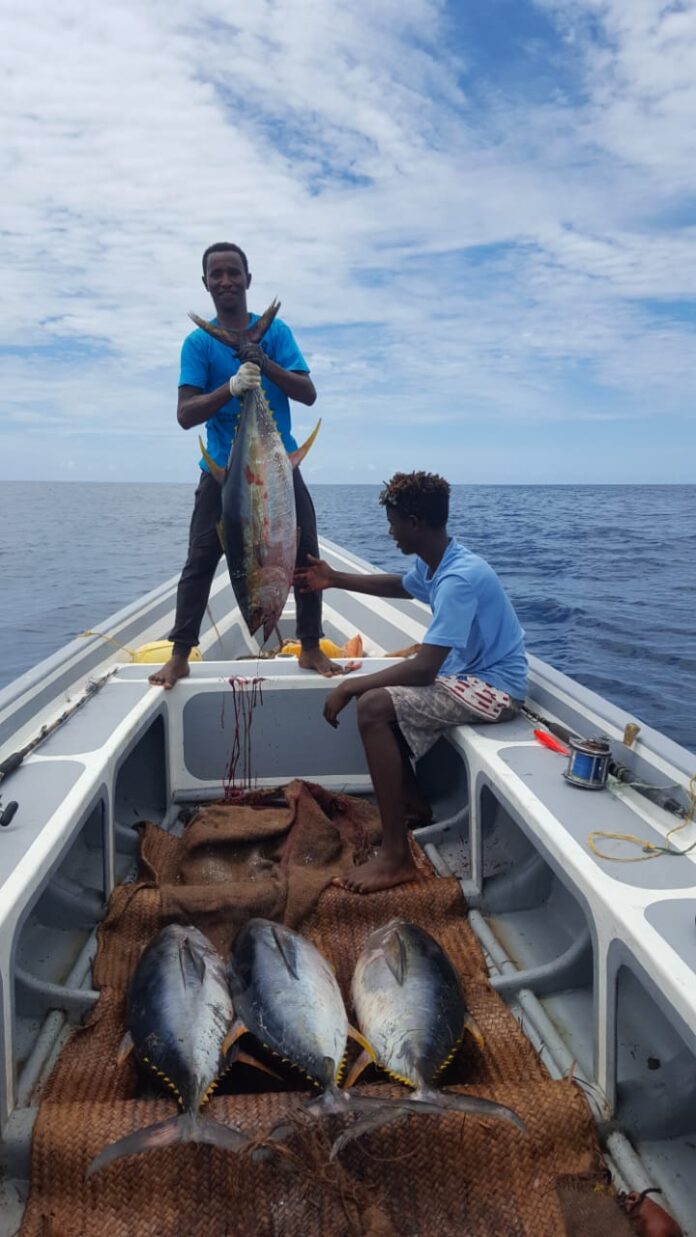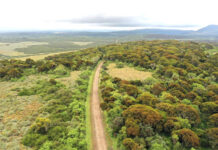By Mazera Ndurya
Mombasa County, Kenya: For many years, Tuna fisheries have been a major income earner around the world with a global market worth US$40 billion annually. However, demand for these fish, specifically bluefin, skipjack, bigeye, albacore, and yellowfin has also driven some species to the brink of collapse, and overfishing continues to threaten the sustainability of numerous tuna populations.
The situation is not rosy for Kenya. With the potential to land between 150,000 and 300,000 tons of fish worth between billion to Ksh42 billion, according to a report by the Kenya Marine and Fisheries Research Institute (KMFRI), Kenya produces a paltry 2,500 tons of tuna and tuna-like species annually, accounting for less than one percent of the total volume caught by other nations whose territory stretches into the Indian Ocean.
According to the Tuna Fisheries Association of Kenya (TuFAK), the quarter allocated to Kenya by the Indian Ocean Tuna Commission (IOTC) is based on the data of the landings recorded along the Kenyan coast.
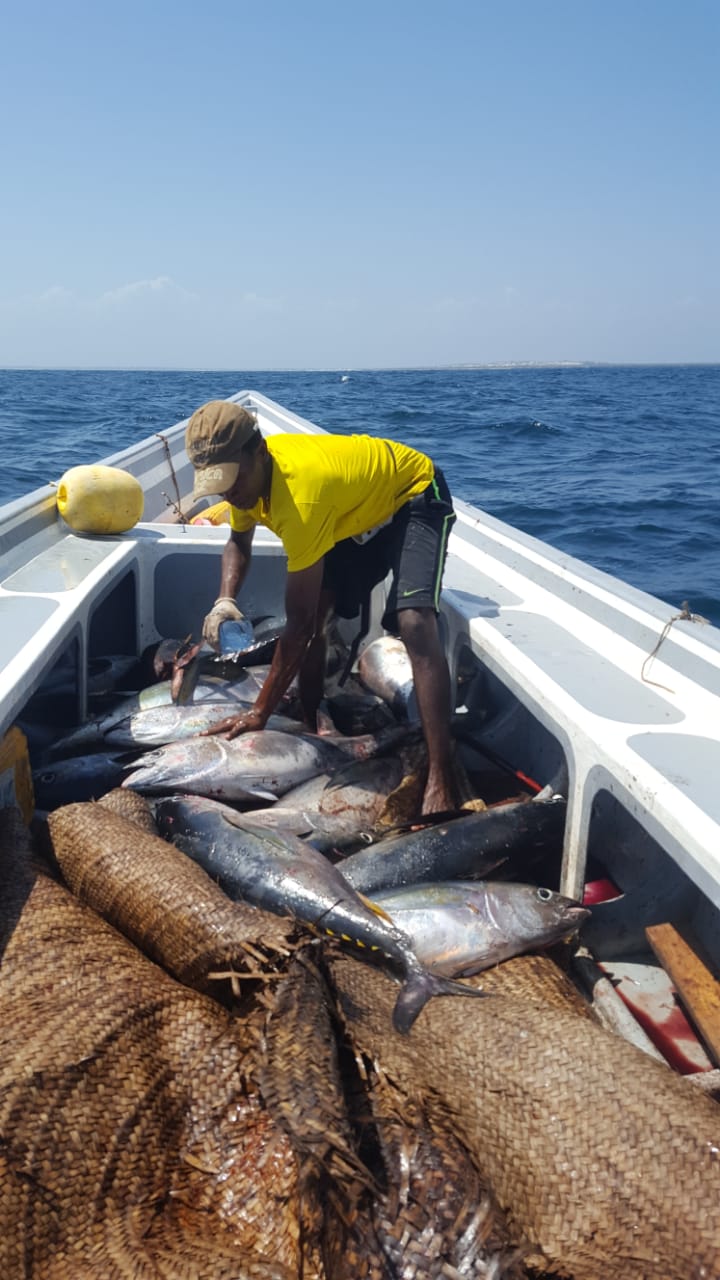
“Kenya’s allocated catch limit for Yellowfin tuna (YFT) in 2023 is 3,654 tons but we rarely reach that catch level due to a small tuna fleet operating in the Kenyan waters,” said Elijah Ngoa, TuFAK Coordinator.
The quarter allocation is dependent on the data that a country gives, therefore if a country has sloppy data you will in turn get limited access in terms of the quarter allocation.
The lack of accurate data on what local and international fishermen catch still poses a big challenge in tuna fisheries and other fish stocks in Kenya is
The majority of those fishing are small-scale fishers fishing near the shore because of poor equipment – vessels, and gears that rarely go beyond 3 nautical miles. This means local fishers are unable to exploit to the maximum both the territorial waters and the Exclusive Economic Zone (EEZ).
Commercial fishers using foreign registered vessels to fish in Kenya waters most time do not land their fish in Kenya therefore the data of the fish caught is not Kenyan. The data is for the country where the vessel is registered. Until recently Kenya was not a flag nation. Therefore the country was losing the data of fish because of this issue of flag nation.
Such is the situation that fisheries stakeholders want to be addressed as the government is in the process of reviewing the National Tuna Fisheries and Management Strategy.
Recently, stakeholders in the fisheries sector including fishermen, civil society, and government officials met in Mombasa to look at the National Tuna Fisheries and Management Strategy and came up with recommendations as the Kenyan government sets in motion a review of the strategy.
“Tuna management strategy expired five years ago but we can’t wait until we are called by the government to give our views. There are lots of agreements happening around tuna therefore we have to look at the documents being developed so that we can also input to ensure that we have a strategy that works for the fishing community and the nation in general,” said Hadley Becha, the Chairperson of TuFAK at the Pre-review workshop in Mombasa.
He said Tuna is not sedentary to Kenyan waters instead being a migratory species it is regulated by international bodies therefore it’s important to understand the laws, policies, regulations, and institutions that govern tuna fisheries.
“Understanding the laws, policies, regulations and institutions that govern tuna fisheries is critical. For instance from 0-2 nautical miles that’s territorial waters; 12-250 nautical miles is the EEZ and is very important for tuna but it is the same space that most of the small fishers don’t reach due to lack of capacity and infrastructure to maximize tuna.
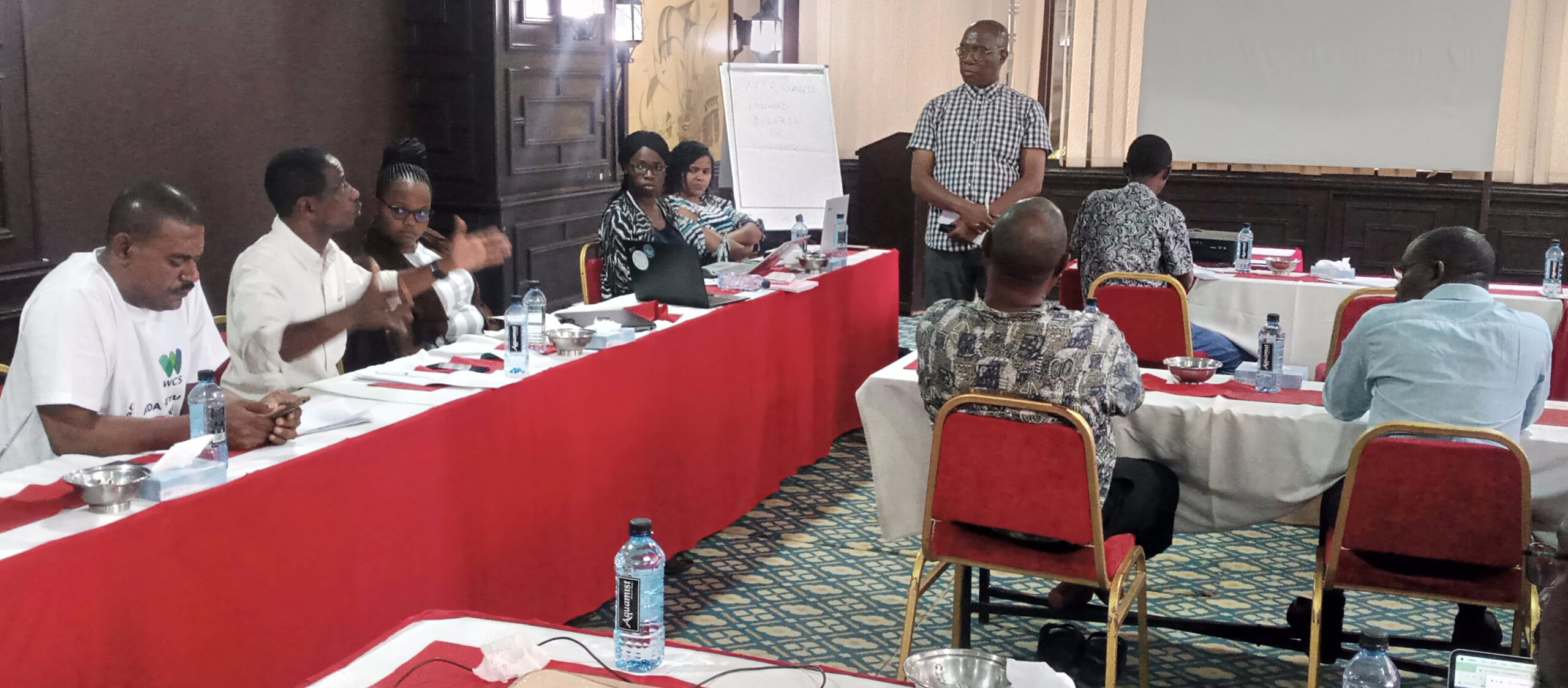
The issue of property rights and tenure must be clearly spelled out. For instance, who owns tuna fisheries? In Kenya, fishing is a national government issue but when it lands it becomes a fisheries issue under the county governments. Who has the legal rights to control tuna?” posed Becha.
One of the issues that came out during the three-day workshop is the place of the Indian Ocean Tuna Commission (IOTC) in the management of tuna in the Western Indian Ocean region.
Kenya is one of the 10 WIO countries alongside Tanzania, Somalia, Tanzania, Mozambique, South Africa, Comoros, Madagascar, Seychelles and Mauritius.
The poor state of Kenya’s marine fishery, experts say, is due to illegal fishing through Illegal, Unreported, and Unregulated (IUU) fishing. This is largely a result of weak enforcement of laws, lack of fishing control mechanisms, and outdated legal frameworks.
Kenya is still operating with the 2013-2018 National Tuna Fisheries and Management Strategy which is currently under review.
There is no doubt that tuna’s biggest market is the European Union (EU) but one can’t just fish and take it to the EU because it is guided by economic partnership agreements that look at the quality and safety of the product.
The market for tuna internationally is available, however, it is difficult for the tuna caught by artisanal fishers to reach the international market due to the strict regulations on quality standards.
“Besides, Tuna trade with European countries is guided by economic partnership agreements such as between the EU and Kenya or the EU and East African community. It is difficult for locally caught tuna to reach the international market due to quality concerns. Market internationally is available only under the multi-lateral (EU) or unilateral (Kenya and Britain),” Ngoa said.
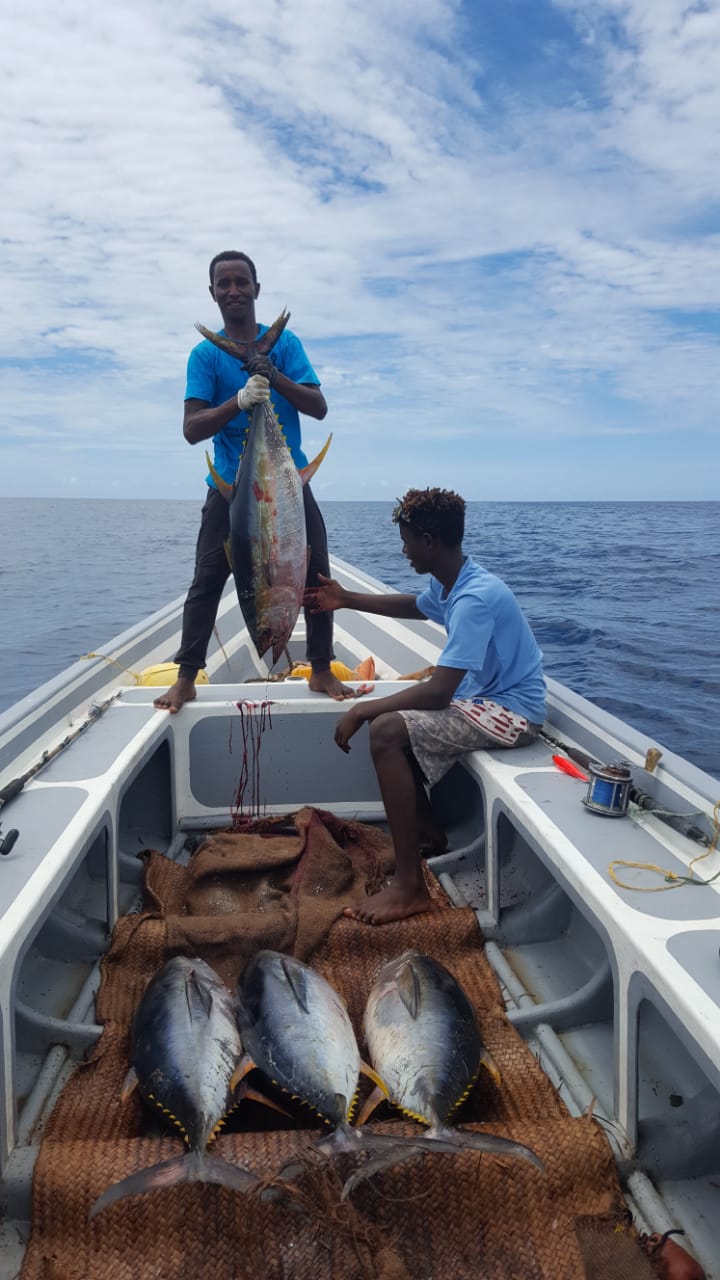
Like any other natural resource governance, fisheries governance is therefore the government has to be very open. It’s important in the tuna sector to ensure there is accountability in line with the Fisheries Transparency Initiative (FTI), for instance in getting to know how many tuna vessels have been licensed in Kenya.
A Fisheries expert, Benedict Kiilu said the tuna sector has not been given the impetus to thrive therefore it is still in its infancy therefore the strategy should focus on making the fishery more robust and beneficial to local fishermen.
He said for the strategy to move from mere rhetoric to action, the Tuna strategy should be private-sector driven.
He adds; “It has to be multi-pronged giving the private sector to drive the sector while support from the government should be infrastructure and value chain.
“There is a lack of focused investment into the sector as well as a lack of awareness because the sensitization has been lukewarm.
“For Kenya to have a stake in the global tuna fisheries market, the issue of quality has to be given prominence. Tuna fish caught doesn’t meet the quality standards for the international market,” he said.
Kiilu’s sentiments resonate with those from the small-scale fishers who are saying the challenge in getting into the EU market starts with the poor fishing methods, harvesting, and post-harvest handling of the fish as most of them use cooler boxes which affect the quality of the fish.
Salim, a tuna fisherman from Malindi says bringing big tuna catches will still be a waste because up to now there is no market internationally while the local market doesn’t have the capacity to accommodate the supply from fishermen.
“There are so many fishermen, even with their limitations in terms of proper fishing gear are able to land hundreds of tons of tuna but lack of steady market forces the fishermen to sell at throwaway prices to avoid wastage,” he said.
Why tuna is unique
Tuna is highly perishable and easily decomposes to produce histamines if not stored under temperature conditions of -6 degrees. Many of the artisanal fishers do not have cold-storage facilities, and by the time the tuna is landed, its quality has significantly deteriorated due production of histamines hence, likely to fail to meet the quality standards to be deemed safe for canning or export. As a result, tuna ends up being sold locally at throw-away prices sometimes fetching less than Ksh100, per Kilo.
How to improve tuna fisheries
Value chain analysis based on the needs of the artisanal fishers
Artisanal fishers are empowered to start from harvesting to post-harvesting to ensure quality that is acceptable in the international markets to beat the stringent conditions set by major markets such as the EU. Provision of infrastructural support by the government.
Tuna is a high-value fish and the strategy will enable them to improve their livelihood. Once complete the country will have a policy that directly touches on tuna fishery.
Indigenous knowledge should be harnessed as it is very critical in identifying where tuna is found, breeding grounds, and feeding areas.

